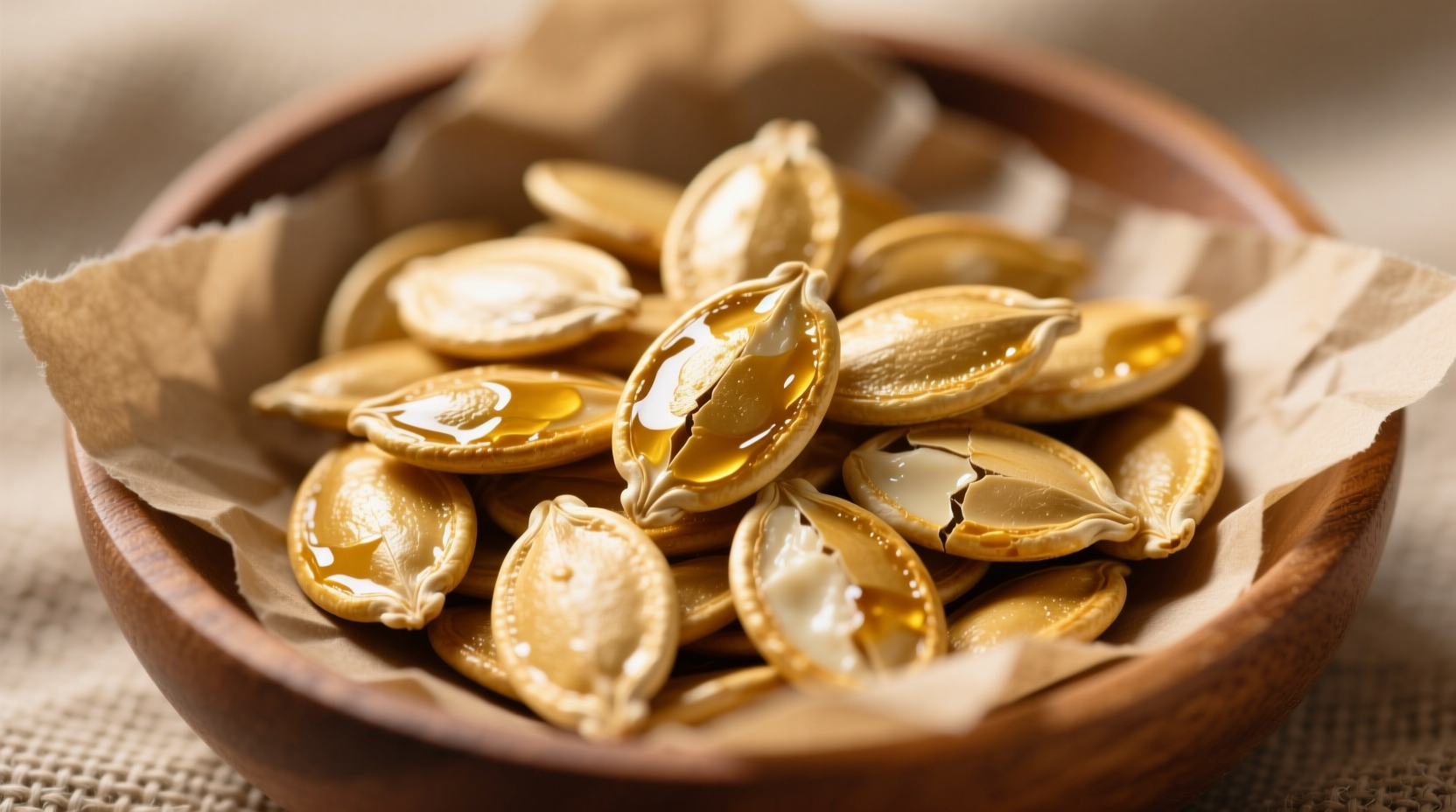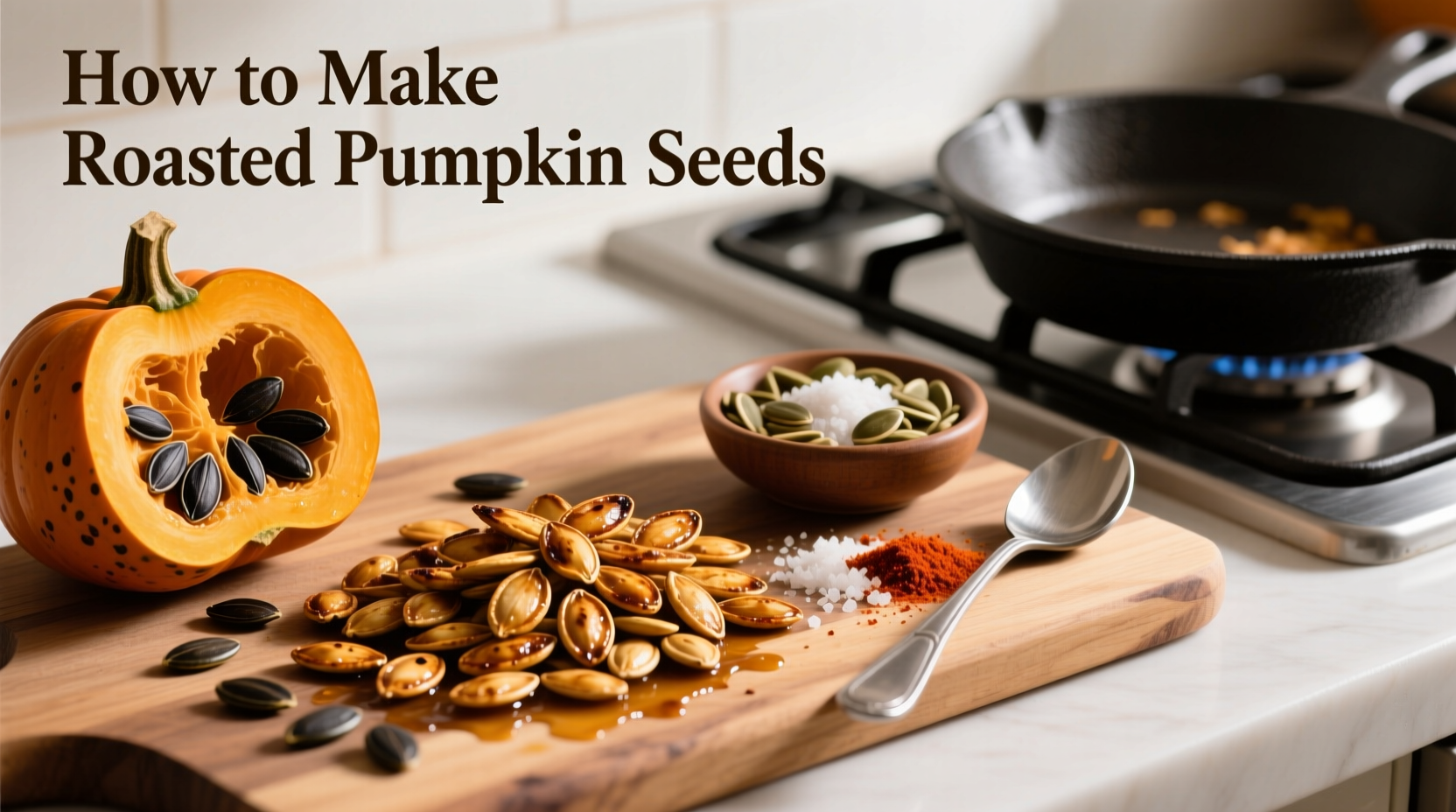Transform your pumpkin carving leftovers into a delicious, nutrient-dense snack with this foolproof roasted pumpkin seeds method. Unlike store-bought versions loaded with preservatives, homemade roasted pumpkin seeds give you complete control over ingredients while reducing food waste. Chefs consistently recommend roasting at lower temperatures for longer periods to achieve perfect crunch without burning – a technique that preserves maximum nutritional value according to culinary research.
Why This Method Works Best
Professional kitchens roast pumpkin seeds at 300°F rather than higher temperatures because the delicate fats in pumpkin seeds begin oxidizing above 320°F, diminishing both flavor and nutritional benefits. The USDA notes that proper roasting actually increases the bioavailability of key nutrients like magnesium and zinc found naturally in pumpkin seeds.
| Ingredient | Basic Recipe | h>Variation Options|
|---|---|---|
| Pumpkin seeds (pepitas) | 2 cups raw, cleaned | Use hulled or unhulled based on preference |
| Oil | 1 tbsp neutral oil | Avocado, melted coconut, or olive oil |
| Salt | 1/2 tsp fine sea salt | Adjust to taste |
| Flavor boosters | None required | Smoked paprika, garlic powder, cinnamon-sugar |
Your Step-by-Step Roasting Journey
Preparing Your Seeds (The Critical First Step)
Most failed batches start with improperly prepared seeds. After carving your pumpkin, separate seeds from pulp using your hands, then rinse thoroughly in a colander under cold water. For optimal crispness, spread seeds on a clean kitchen towel and roll gently to absorb moisture – this drying step takes 10 minutes but makes the biggest difference in final texture. Never skip air-drying; wet seeds steam rather than roast.

Flavor Customization Made Simple
While basic salted seeds satisfy most palates, understanding flavor chemistry elevates your results. Professional chefs categorize pumpkin seed flavor profiles into three distinct paths:
- Classic savory: 1/4 tsp garlic powder + 1/4 tsp onion powder (perfect with soups)
- Spicy kick: 1/2 tsp smoked paprika + pinch cayenne (ideal for game day)
- Sweet & spicy: 1 tsp cinnamon + 1 tbsp maple syrup (holiday favorite)
Remember: Add dry spices before roasting, but incorporate wet ingredients like maple syrup during the last 5 minutes to prevent burning.
The Perfect Roasting Process
Preheat your oven to 300°F (150°C) – lower than most recipes suggest. Spread dried seeds in a single layer on parchment-lined baking sheet. Roast 30-45 minutes, stirring every 15 minutes, until golden brown and crunchy. They'll continue crisping as they cool. The National Center for Home Food Preservation confirms this temperature range eliminates moisture while preserving healthy fats.
Storage Timeline for Maximum Freshness
Proper storage maintains crunch and nutritional value. Here's the verified freshness timeline:
- Room temperature (airtight container): 2 weeks
- Refrigerated: 1 month
- Freezer: 3 months (thaw at room temperature)
Moisture is the enemy of crispness – always cool completely before storing. The FDA recommends keeping roasted seeds below 40°F when refrigerated to prevent rancidity.
Troubleshooting Common Issues
Burnt seeds? Your oven runs hot – reduce temperature by 25°F next time. Soggy results? Seeds weren't dried thoroughly before roasting. Uneven cooking? Stir more frequently during roasting. Professional kitchens use convection ovens for even airflow, but standard ovens work with careful monitoring.
Nutritional Powerhouse Confirmed
According to USDA FoodData Central, a 1-ounce serving of roasted pumpkin seeds contains:
- 151 calories
- 13g healthy fats (mostly unsaturated)
- 9g protein
- 5mg zinc (45% of daily value)
- 151mg magnesium (37% of daily value)
These nutrient-dense seeds support heart health and immune function better than many commercial snack alternatives.
Make It Your Own: Pro Tips
For restaurant-quality results, try these chef-recommended techniques:
- Toast spices separately before adding to enhance flavor compounds
- Use a baking steel instead of parchment for more even heat distribution
- Add a pinch of baking soda to the soaking water for extra crunch
- Finish with flaky sea salt immediately after roasting for texture contrast











 浙公网安备
33010002000092号
浙公网安备
33010002000092号 浙B2-20120091-4
浙B2-20120091-4